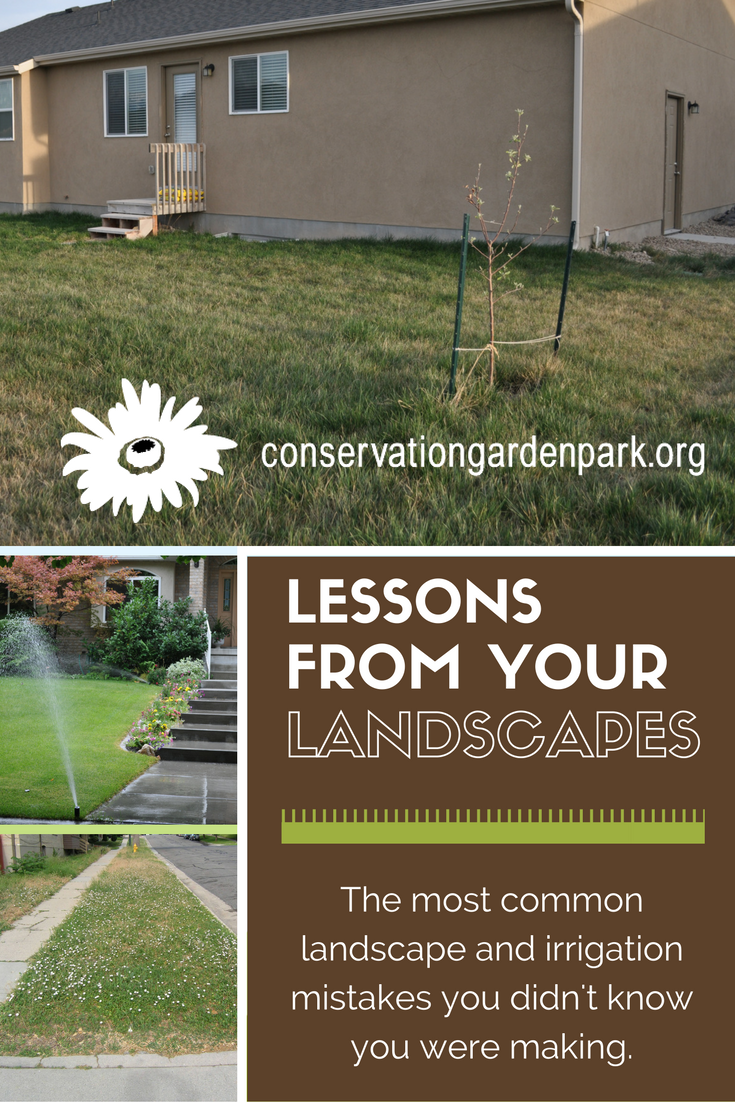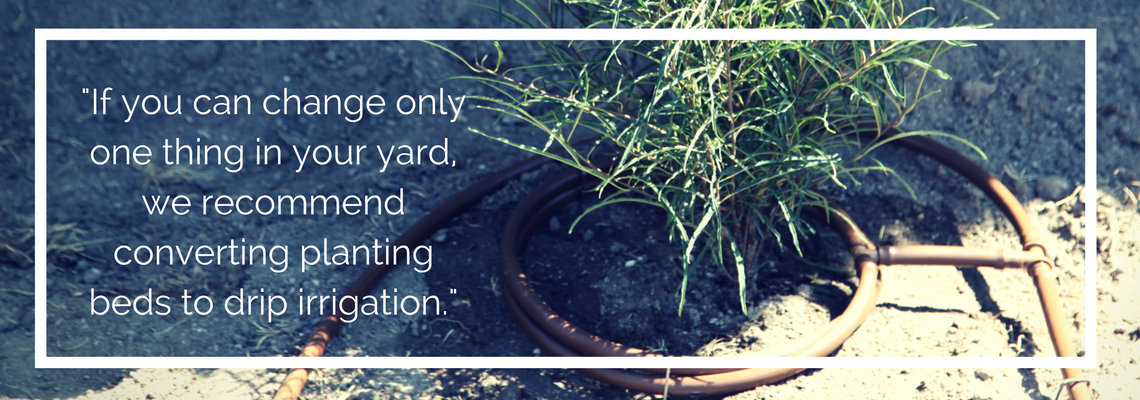
Lessons from YOUR Landscapes
-
At the Conservation Garden Park, we’re always looking for innovative ways to help locals landscape better in our climate. In pursuit of that goal, we recently completed a Landscape Consultation pilot program for a select group of residents in specific test areas. If the program was successful, we hope to introduce it more broadly to additional residents in our Salt Lake County service area.
A Landscape Consultation consists of two landscape experts meeting with the homeowner to discuss landscape issues, sprinkler problems, design considerations and sprinkler scheduling. Each sprinkler zone is operated and every sprinkler head is checked for proper functionality. Short term and long term recommendations are given to homeowners to make repairs, schedule irrigation properly, increase irrigation efficiency and even to make more drastic changes to the overall landscape design. Educational resources are shared with the homeowner, and sometimes irrigation product rebates are applicable.
Our goal was not only to consult but also to learn about the real challenges faced by real homeowners in their landscapes. After working with more than 80 homeowners this season, here’s what we learned:
-
Poor sprinkler system design.
Most of the time, sprinkler systems were in pretty bad shape, both in design and operation. Homeowners were compensating for poor sprinkler coverage by watering longer and more often, which resulted in some areas being drastically overwatered (creating new problems)—without fixing the actual problem. Leaking sprinkler heads and connections were also abundant. When repairs were made, sprinkler heads were often replaced with a different type, resulting in even less efficiency.
-

-
Sprinkler head mixups.
There are two types of sprinkler heads – fixed spray pop up heads and rotors. They each have drastically different rates of application. For example, a rotor head will take about 45 minutes to sufficiently water the lawn, while a pop up head will apply the same amount of water in about 21 minutes. When these two types of sprinklers are used on the same zone, the result is excessive amounts of water in some areas and not enough in others. -

-
Lawn and plants have different water needs.
Homeowners understood well how to take care of lawn, but not trees and shrubs. People generally reported that they mow, water, aerate and fertilize regularly for the lawn, but don’t do anything for areas outside the lawn. Planter beds were often watered with sprinklers that also watered the lawn, but shrubs need much less water than lawn. Planting beds generally need to be watered only once per week, where lawn may need to be watered as much as three times per week in the heat of the summer. -

-
The fix.
One of the most common recommendations we made was to convert spray heads to drip irrigation in planter beds. Trees and shrubs are healthier when their larger root zones are watered completely. Lawn roots typically grow about 2 to 4 inches into the soil (a bit longer if you water correctly), while shrubs send their roots 12 inches or more into the soil. Simply put, a larger plant will have deeper roots than a smaller plant such as lawn. Watering shrubs as if they were lawn provides the top of the root zone with plenty of water, but not the bottom. This causes shallow plant roots, leaving shrubs more susceptible to drought, damage and disease.
If you can change only one thing in your yard, we recommend converting planting beds to drip irrigation. -

-
Heading in the right direction.
On the positive side, homeowners nearly always had their sprinkler timers set for night or early morning hours to minimize water loss from evaporation. Many people referred to literature or watering guides, and were making an effort to schedule their sprinkler timers efficiently. Overall, we're making progress, we just need to do more of the "right" things.
There are many reputable irrigation contractors who can review your current sprinkler system and recommend ways to fix it to improve performance and decrease your frustration (and water bill!) A great place to start is with one of our local irrigation supply companies. These companies carry top quality parts and employ certified, trained professionals which are harder to come by at big box stores. The hardest part of dealing with the sprinkler system is overcoming the intimidation factor. It feels overwhelming but there are people and resources to help. Given the huge demand for our limited test run of landscape consultations, we'll be working hard to create new ways for you to connect to the services you need. Stay tuned next season! -


